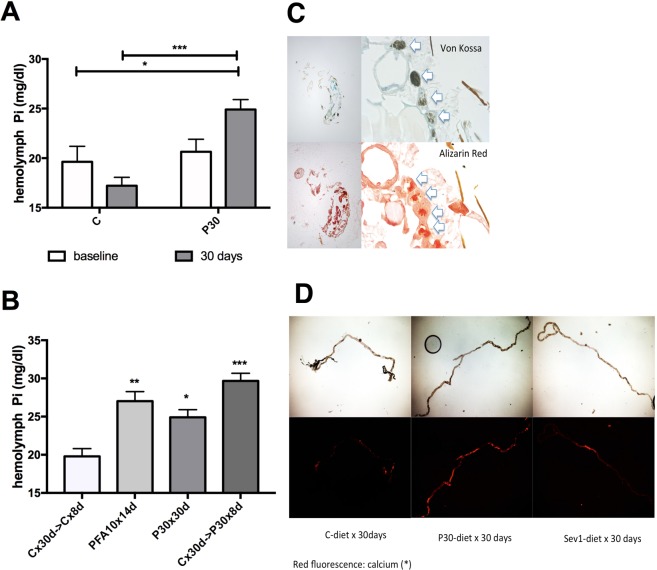Figure 1.
High dietary phosphate (Pi) is accompanied by the development of hyperphosphatemia and Malpighian tubule deposits. (A) Fly blood Pi concentration after culture of y w females at 25 °C on control (C) alone or medium supplemented with 30 mM sodium phosphate (P30) for five (baseline) and 30 days, (mean ± SEM, n = 4 pooled collections of 15 flies, ***p = 0.0002, *p = 0.0424). (B) Fly blood Pi concentration after culture of y w females at 25 °C on control medium (C) for 30 days, followed by C or P30 medium for 8 days, or culture on C medium supplemented with the Pi transport inhibitor phosphonoformic acid 5 mM (PFA) for 14 days (mean ± SEM, n = 4–8 pooled collections of 15 flies, ***p = 0.0001, **p = 0.0023, *p = 0.0110). (C) Paraffin embedded sagittal sections of adult flies after culture for 30 days on P30-medium stained for Pi with von Kossa/methylene green (black stain in upper panels) or for calcium with Alizarin Red (red stain in lower panels) (4X (left) and 40X (right)). (D) Medium supplemented with 1% sevelamer (Sev1) reduces these calcium Pi deposits, when compared to culture on C and P30 medium. Alizarin Red stain of native preparations of anterior Malpighian tubules (representative of 4–8 tubule pairs).

